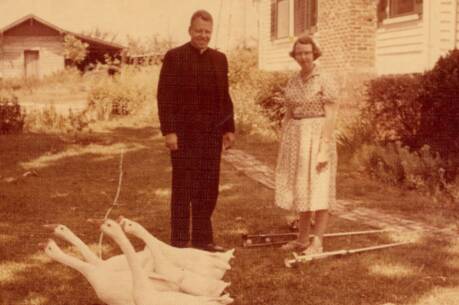A key document listing the names of 3,600 people who were allegedly sheltered by Catholic religious orders in Rome during the Nazis’ occupation of the city has been rediscovered, after having been considered lost. The document has been studied by scholars from Roman institutions and from Yad Vashem, the World Holocaust Remembrance Center in Jerusalem, and at least 3,200 of those names have since been verified by the Jewish community, lending credibility to claims that religious orders in Rome had indeed helped to shelter Jews during the occupation.
The Nazis occupied Rome for nine months, from September 1943 until its liberation by the Allies on D-Day in 1944. In October 1943, the SS arrested some 1,200 Jews in Rome’s historic Jewish quarter, just across the Tiber from the Vatican. Almost all of them were killed at Auschwitz within a few days. Over the course of the occupation, nearly 2,000 people, including children, were deported and murdered.
The rediscovered document, which was found in the archive of the Pontifical Biblical Institute in Rome, lists 100 women’s religious orders and 55 men’s orders that sheltered more than 4,300 people—3,600 who are named in the list. The Jewish Community of Rome was able to confirm that 3,200 of those named were indeed Jews, and, according to a press release issued this morning, “it is known where they were hidden and, in some cases, where they lived before the persecution.”
A key document listing the names of 3,600 Jews who were allegedly sheltered by Catholic religious orders in Rome during the Nazis’ occupation of the city has been rediscovered.
The press release, co-published by the Pontifical Biblical Institute (the “Biblicum”), the Jewish Community of Rome and Yad Vashem, states, “The documentation thus significantly increases the information on the history of the rescue of Jews in the context of the Catholic institutions of Rome.”
Dr. Robert A. Ventresca, the vice president and interim academic dean of King’s University College at Western University in Ontario, Canada, and a biographer of the controversial wartime pope, Pius XII, said that while the list provides additional clues to help historians understand exactly what happened in Rome during the occupation, he hopes “the news headlines generated by this discovery won’t be instrumentalized as happens often with the topic of the Church and the Holocaust.”
[Read more: A deep dive into the secret archives of Pope Pius XII]
“For example, we may see this document used to revive and bolster what we might call redemptive narratives about the ‘good’ Catholics who saved thousands of Jews. While there certainly were many such good Catholics who did precisely that, and whose stories deserved to be known and told, there is a more complex reality at play even in the case of so-called ‘rescue’ during the Holocaust,” Dr. Ventresca said in an email interview. “We betray the work of truth-telling when we sacrifice the complexity of historical reality to serve redemptive narratives in the present. For those of us engaged in Jewish-Catholic dialogue, our priority must remain truth-seeking and truth-telling in all its complexity.”
For Dr. Ventresca, who has written on the complex dynamics at play behind Pope Pius XII’s public silence on the persecution of the Jews during the war, the document raises important questions, like why the list was created and what happened to those named in it.
It is already known who created the list: The Italian Jesuit Gossolino Birolo compiled it between June 1944 and spring 1945, after the liberation of Rome. The Jesuit worked as the bursar at the Biblicum until his death in June 1945, and the rector of the Biblicum at the time was Augustin Bea, a Jesuit who would go on to be named cardinal and oversee the drafting of “Nostra Aetate,” a document of the Second Vatican Council that decidedly moved the church toward a relationship of dialogue with Judaism.
The Rev. Dominik Markl, S.J., of the Pontifical Biblical Institute and University of Innsbruck who helped coordinate the research, said he was moved by the fates of the people named in the documents, “those threatened to be murdered because of the persecution by the Nazi regime, and the many anonymous religious sisters and priests who risked their own security to help them survive.”
In a statement to The Associated Press, Father Markl noted the significance of the joint research between Catholic and Jewish scholars on an fraught issue which has long divided scholars and often strained relations between Rome’s Jewish community and the Holy See.
“We are extremely grateful for the collaboration with the Jewish Community of Rome and Yad Vashem, which is promising to lead towards a more profound understanding of the history of the Shoah in Rome and beyond,” he said.
The names of the religious orders and the number of people they sheltered had been published by the historian Renzo de Felice in 1961, but it was never able to be verified because Father Birolo’s list was lost in the archives. The rediscovered document was presented at the Museo della Shoah in Rome on Sept. 7. Access to the document is currently restricted “for reasons of privacy protection,” this morning’s press release read.
Material from the Associated Press was used in this report.
Correction: The original headline of this article said 3,600 Jews were sheltered by religious orders. Only 3,200 of the 3,600 listed have been verified.
This article has been updated.








